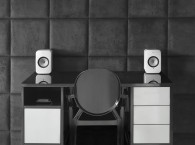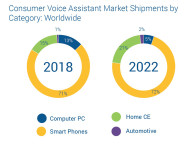
New to this year's report was a study of the adoption rates and uses of smart speakers, which are already influencing how audiences consume media. According to AudienceNet's findings, 14% of the U.S. population now owns a smart speaker (around 30% of U.S. broadband households according to Parks Associates), and listening to music was the most popular use case among owners. Amazon's Echo and smaller Echo Dot proved to be the most popular smart speakers, over offerings from Google and Apple.
In terms of AudienceNet's music consumption metrics, which are tracked annually, on-demand streaming accounted for 27% of overall music consumption and was the most popular format among younger demographics by a significant margin, taking up 60% of 16 -19 year olds listening time, a 13% increase over last year.
Despite a 3% drop since last year, AM/FM Radio was still the most popular listening source in the U.S. accounting for 31% of total listening time. However, AM/FM radio only accounted for 12% of listening among 16-24 year olds, with popularity of the format rising as respondent age increased. Listenership to radio and CD players was very low among 16-24 year olds, and grew in linear fashion as participants got older, peaking among those age 65+ at 45%.
Back in the realm of hardware, smartphones were the primary listening choice among younger listeners, taking the majority share of listening among all aged 34 and below (45% for ages 16-19, 40% for ages 20-24, and 31% for ages 25-34). The smartphone also proved to be single most used device for music consumption, capturing 25% of total time spent listening - up 6% from the same study last year. Collectively, however radio receivers of all varieties (AM/FM radios, in-car AM/FM receivers) accounted for the majority of listening time to music among the total sample when combined (30%).

About the Music Business Association and AudienceNet
The Music Business Association is a not-for-profit membership organization that promotes and invests in the future of the music business through events, education and engagement. The Association's Annual Conference, Music Biz 2019, is set to take place Sunday, May 5 through Wednesday, May 8 at the new JW Marriott Nashville. The Conference draws over 2200 attendees from across the globe and showcases more than 300 speakers at 100+ programs.
AudienceNet is an accredited, full-service market research agency, specialized in conducting music and entertainment research. The company just released its latest "Music Consumption: The Overall Landscape 2018," report, now in its third year, which provides a measure of all audio consumption in the United States. This year’s report also features a brand-new investigation of smart speakers, measuring their adoption rates, use and overall impact on music consumption. It can be downloaded here: https://musicbiz.org/research-report-request/
https://musicbiz.org | www.audiencenet.co.uk






